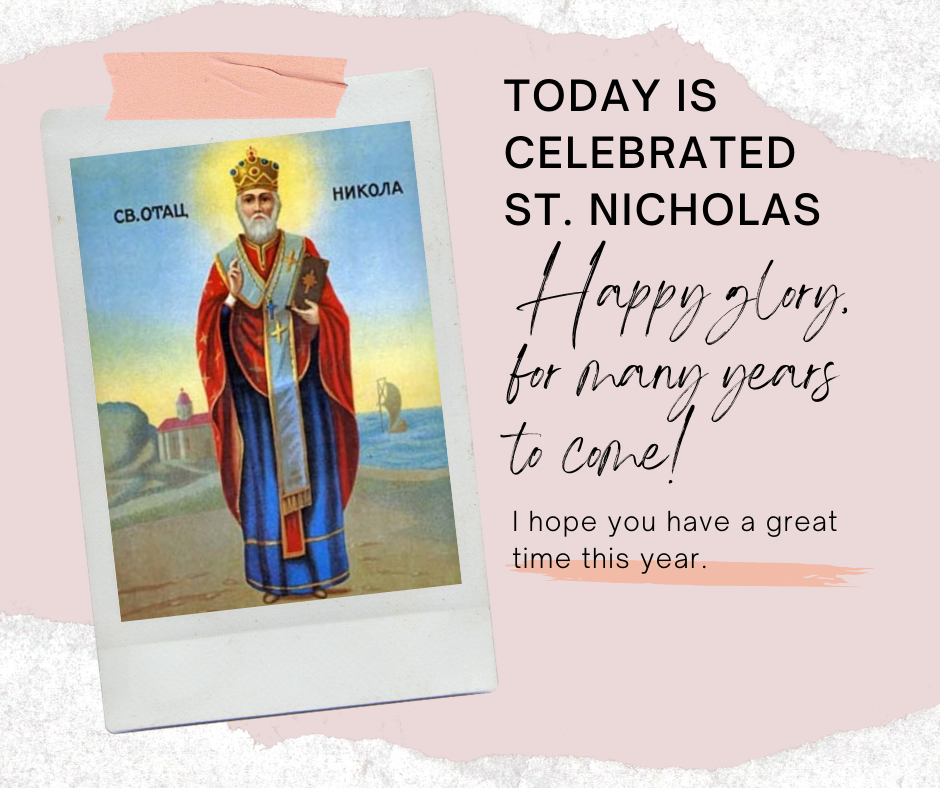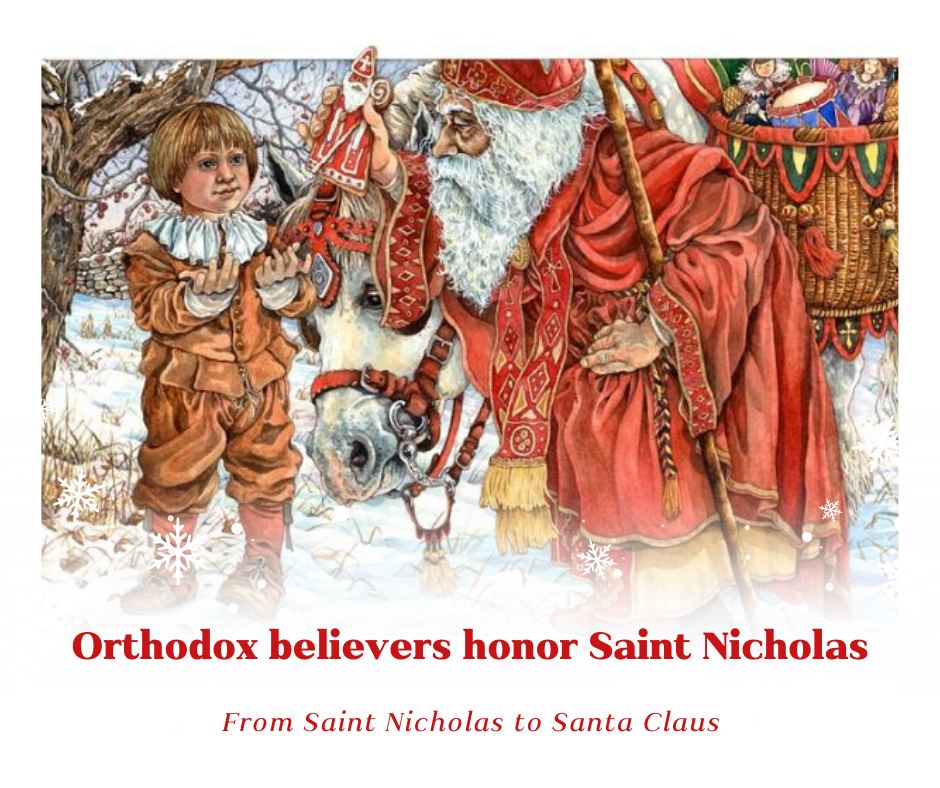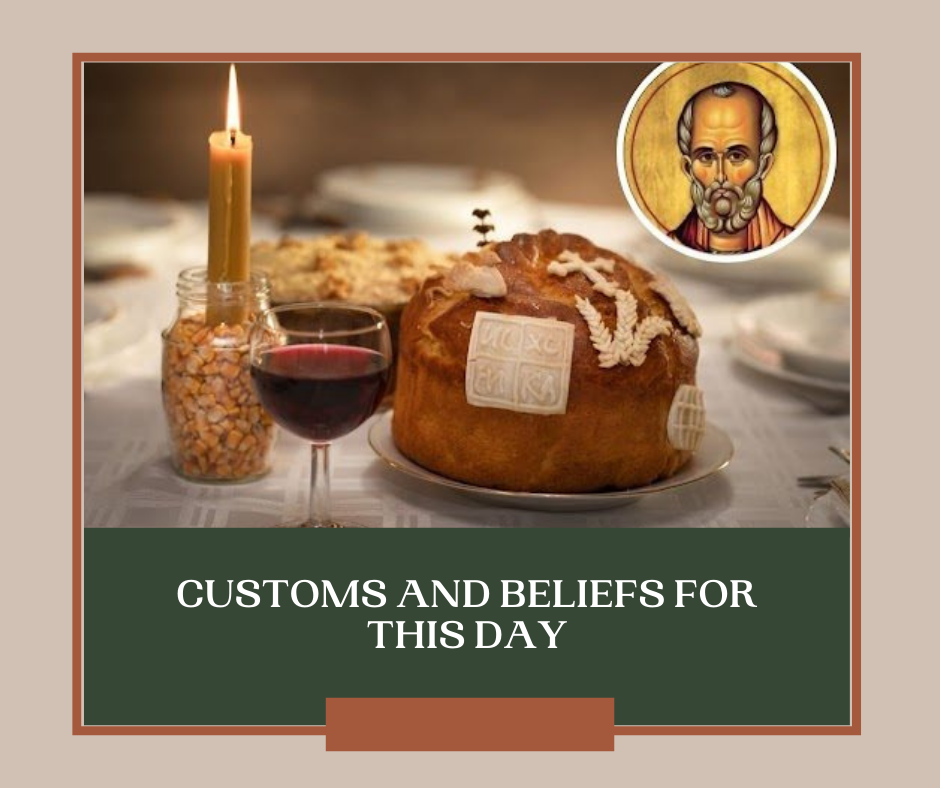Today is celebrated St. Nicholas – Happy glory, for many years to come!
Christians believe that St. Nicholas the Wonderworker has saved lost ships many times and that is why he is the protector of sailors, fishermen, and ships.
In the Christian calendar, Saint Nicholas is celebrated on December 6 according to the old Julian calendar, ie. on December 19, according to the new Gregorian calendar.
Orthodox believers honor Saint Nicholas

Many families will celebrate the holiday in the evening with a rich lean table dominated by fish and lean sarmi. Saint Nicholas is one of the most beloved Christian saints. That is why it is the most common glory in the Balkans. Some people celebrate the evening of December 19, and some on the day of.
This saint had a very exciting life story, which has fascinated Christians for centuries. Born in the Asia Minor city of Patara, a port on the Mediterranean coast of present-day Turkey, Saint Nicholas lived in the 4th century, long before the schism between the Orthodox and Catholic Churches of 1054.
His rich parents, Theophanes and Nina, had their son Nicholas during the reign of the Roman emperor Valerian (253-260), a greedy man who, because of his lust for gold, organized a military campaign against the Persian Empire. The Persian king Shapur captured him at the Battle of Edessa, humiliated him as a hostage, and finally killed him by pouring molten gold down his throat as a symbol of his greed.
As Valerian was the first (and remains the only) Roman emperor to be captured in battle, his capture and death caused a wave of instability in the Roman Empire.
Young Nikola grew up in such an unstable environment. When his parents died in the great epidemic, Nicholas divided all the inherited wealth. Even as a child, he stood out for his good upbringing, which is why he became a favorite before God and before people. He was raised by his uncle, Archbishop Patare, under whose watchful eye Nikola progressed in the church hierarchy. After the death of his uncle, Nikola was elected Archbishop of Mirlikia. He was also one of the archbishops who were summoned before Emperor Constantine at the Council of Nicaea in 325.
Saint Nicholas died on December 19, 343. He was buried in the Cathedral Church of the Mirlikii Metropolis, and at the end of the 11th century, his relics were transferred to Bari, to the monastery of St. Jovan Pretecha.
From Saint Nicholas to Santa Claus
The red cloak and white beard remind us of today’s modern depiction of Santa Claus. In recent times, thanks to advertisements and consumer society, he is best known as Santa Claus (Santa Claus, shortened from Santa Nikolaus – Saint Nicholas). While Orthodox icons depict him as a tall man in a distinctive red cloak, with a bishop’s miter on his head and a staff in his hands, giving children gifts from the sack, the consumer society has “spiced” it up a bit. The red cloak remains, as does the long gray beard, but the reindeer that pull the sleigh that Santa Claus travels around the world on Christmas Eve have been added.

Religious analysts remind that St. Nicholas is the earliest saint and is famous throughout Europe, without much connection with the modern Santa Claus, noting that today’s Santa Claus is a non-religious and non-Christian copy of St. Nicholas, but children are still happy with him.
The reason for its popularity should be sought in the very person of Saint Nicholas, who distributed all the wealth inherited from his parents to the poor, the old and the infirm. He set off on a journey with a bowl of faith in God, so he is considered a miracle worker. Wanting to remain anonymous, he did not give the money to people, but put it in their pockets so that they would be surprised when they found it. It is precisely because of his charity that the legend of Santa Claus, i.e. Santa Claus, who would leave gifts for children in a stocking in front of the fireplace on Christmas Day, arose.
CUSTOMS AND BELIEFS FOR THIS DAY

On the day of glory, a large candle of 50-60 centimeters is brought into the home, and it can be bigger, depending on the possibilities. The candle is placed in a candle holder and decorated. The host lights it on the day of glory, just before cutting the cake. He crosses himself, in his prayer he mentions the Lord and the name of his cross home glory, kisses the candle and lights it. The candle and its light symbolize the light of Christ’s teaching in the home where it is celebrated. Many who respect the domestic glory believe that on that day the saint comes to their home, so they say: “Here, my Saint Nicholas, Saint Michael the Archangel has come…” On the day of the glory, the candle is left burning all day. When it burns down to the candlestick, extinguish it with a few drops of red wine. During the slavish meal, pleasant and decent conversations are held, and the host, who stands and serves the whole time, is expected to say something from the life of the slavish.
The first serving of the glory is the glorious wheat which is prepared for all the glories and for the holy archangels Michael and Gabriel, as well as for the holy prophet Elijah.
The wheat is usually served by the housewife, or if there is a girl in the house – a daughter or granddaughter, and a younger woman or a girl from the neighborhood can be called to help serve the wheat (make sure she is beautiful). The host is served first, then everyone in the household, and then the guests in order as they arrive. During the entire time of the glory, the wheat stands next to the icon of the local saint. The grain is served in the following way: the hostess offers the wheat to the guest, he stands up, crosses himself looking at the icon, then turns to the host and hostess to congratulate them and takes from the wheat.
The wheat is in memory of the holy prophet Daniel and the three children who, not wanting to eat from the sacrifices of King Nebuchadnezzar, fasted and ate only grain food and were healthier and more beautiful than those who ate meat. Wheat is also in memory of our deceased ancestors, who celebrated the glory that we continue to celebrate.
The bread and wine symbolize the Body and Blood of Christ. (Unlike the Eucharist where we have the real Body and real Blood of Christ – the bread and wine of the Slavs are just a symbol.)
In our region, prosphora is offered for glory. We bake decorated bread – cakes for the name day. On those loaves are slaughtered: small stamps from the poskurnik to know in whose honor and glory we make the bread, the decalogue (the tables of Moses) – to know that we should respect and keep the 10th commandments of God, ears of wheat, praying that there will always be bread (food) in our homes, bunches and barrels – in our homes, there should always be wine, chickens – symbolize children, the sun – symbolizes the joy that comes to us from our Savior and Lord Jesus Christ.
Maja Spasovska
